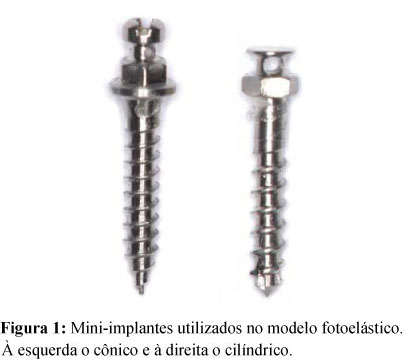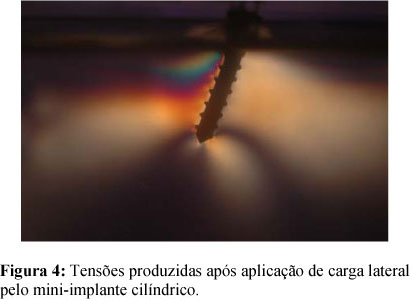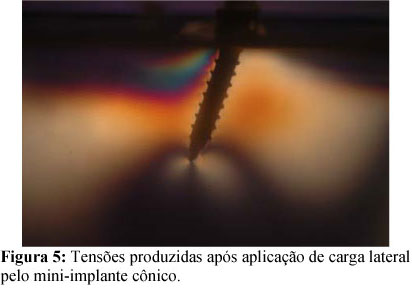The objective of this study was to evaluate the stress distribution in the resin in contact with the spirals of cylindrical and conical mini-implants, when submitted to lateral load and insertion torsion. A photoelastic model was fabricated using transparent gelatin to simulate the alveolar bone. The model was observed with a plane polariscope and photographically recorded before and after activation of the two screws with a lateral force and torsion. The lateral force application caused bending moments on both mini-implants, with the uprising of fringes or isochromatics, characteristics of stresses, along the threads of the mini-implants and in the apex. When the torsion was exerted in the mini-implants, a great concentration of stress upraised close to the apex. The conclusion was that, comparing conical with cylindrical mini-implants under lateral load, the stresses were similar on the traction sides. The differences appear (1) on the apex, where the cylindrical mini-implant showed a greater concentration of stress, and (2) along the spirals, in the compression side, where the conical mini-implant showed a greater concentration of stress. The greater part of the stress produced by both mini-implants, after torsion load in insertion, were concentrated on the apex. With the cylindrical mini-implant, the greater concentration of tension was close to the apex, while with the conical one, the stresses were distributed along a greater amount of apical threads.
stress distribution; photoelasticity; mini-implants; absolute anchorage







